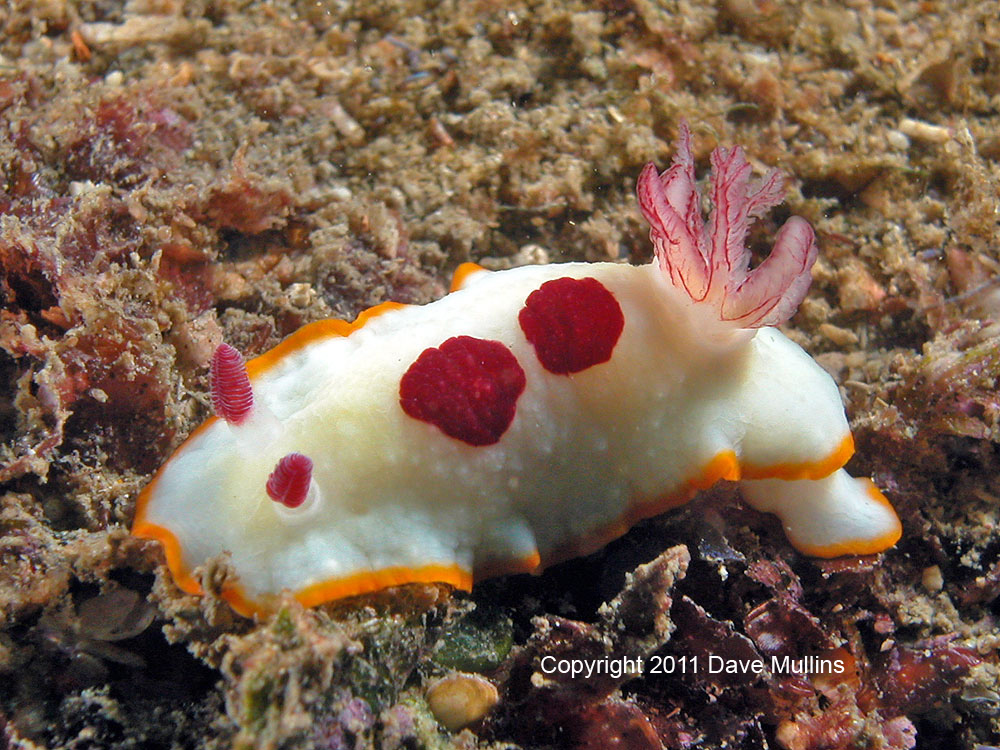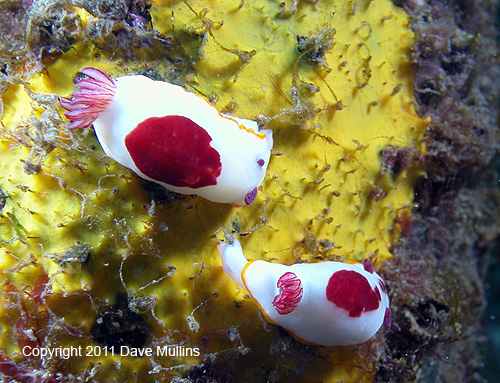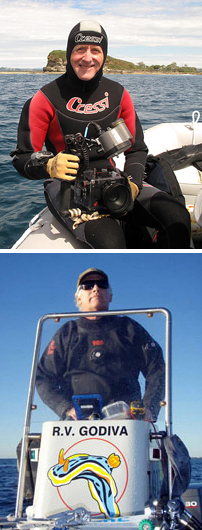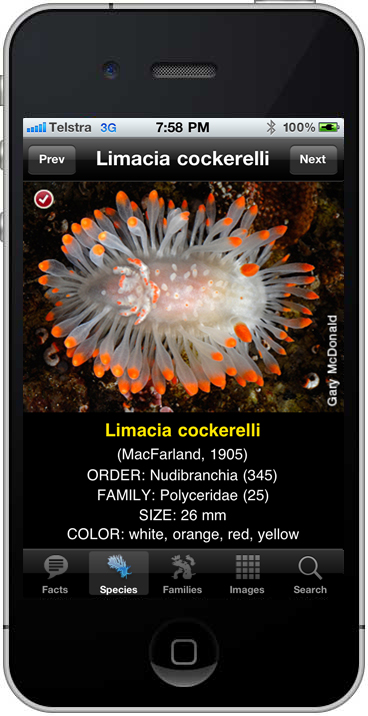 |
Chromodoris splendida
Image courtesy of Dave MullinsGneering Shoals, Mooloolaba, Queensland, Australia
Nikon Coolpix 5000 in Subal Housing with twin Inon Z220 strobes.
Copyright 2011, Dave Mullins
 |
Chromodoris splendida (Angas, 1864)
The colouring and marking of Chromodoris splendida make it possibly one of the most conspicuous of nudibranchs in our part of the world. I even recall spotting one once, down on the seabed from the surface prior to descending for a dive in 12 metres of water. It is a large nudibranch of up to 65 mm in length but most often seen in the 30 to 40 mm range. The bright white of the mantle trimmed around the margin with golden yellow and marked with blood-red blotches has caused us to dub it "strawberries and cream". This is just a private nickname I might add and not a common name. The similarly blood-red rhinophores and white gills with red streaks on the axes complete the visual proclamation. The currently reported distribution is quite limited extending only from New South Wales to southern Queensland on the east coast of Australia and is considered a common species in those coastal waters. In its southern range Chromodoris splendida displays a more spotted arrangement of mantle markings compared to the large single or several smaller blotches of the more northern residents. This spotting gives it a somewhat similar appearance to a number of other dorids including Chromodoris daphne and Mexichromis festiva that have a much similar distribution. This is quite possibly an example of aposematic colouration whereby a group of animals display similar colour and pattern in order to "teach" potential predators, mainly fish, that they possess distasteful/poisonous mantle glands. Just to confuse us even more though, we have also found specimens of C. splendida devoid of any red markings at all on the mantle, and I suppose we could call them "spotless". These plain variants are not particularly common. At times individuals will also turn up with markings that are orange rather than blood-red and this paler colour usually extends to the gills and rhinophores as well. Chromodoris splendida feeds upon a number of different sponges of the Darwinella genus that are mainly pink or yellow and also a Dictyodendrilla sp. that is very dark in colour. |
We live in the hope of one day finding a specimen with a red blotch upon its mantle in the shape of Australia.
References:
Cobb & Willan 2006. Undersea Jewels, ABRS, Canberra
Rudman & Bergquist 2007. A review of feeding specificity in the sponge-feeding Chromodorididae, Molluscan Research 27(2): 60-88
Rudman 1998 - 2008. Chromodoris splendida, Factsheet & Related Messages, Sea Slug Forum, Australian Museum, Sydney.
Queensland, Australia
Nov., 2011
Send Dave email at marineimages@hotmail.com

|
|
Gary Cobb and Dave Mullins
on location in Queensland, Australia
 |
NUDIBRANCH ID iPHONE APP
NUDIBRANCH ID iPHONE APP SERIES
For more information see the Nudibranch ID App
Website
or send Gary email at or send Gary email at gary@nudibranch.com.au
|
 |
